The story of distance at the amateur level is, surprise, surprise…for all intents and purposes unchanged since forever – or at least since people started caring about it.
That fundamental fact is the rallying cry for amateur golfers every time the USGA, R&A, and anyone mentions anything about a distance rollback.
Amateurs don’t hit the ball too far. They never have…and if you’re into death and taxes sort of guarantees, you can probably add “average golfers obsoleting anything longer than a pitch and putt” to the list.
The Lack of Distance Problem
In 2020, the Arccos database average for shots hit with a driver on par 4s and par 5s was 219 yards. When we narrow it down to just men it jumps all the way to 221. Women averaged 171.
At this point, saying distance isn’t a problem at the amateur level is little more than stating the obvious, but that doesn’t mean there aren’t other insights worth discussing.
Distance, Handicap, and Age
It should come as no particular surprise that there are correlations to be found between distance, handicap, and age.
While the Arccos data confirms that Father Time is undefeated, it’s perhaps notable that Skill (handicap) is twice as impactful as age when it comes to gaining, or I suppose maintaining distance.
The bad news is that Driving distance invariably declines with age, but the skill of the golfer has a much greater influence than age. If you’re like me, that last part is also bad news.
As we work our way through the following charts, here are a few big-picture points to keep in mind.
1) As noted, skill is 2X as impactful as age when it comes to gaining/maintaining distance. What this means is driving distance changes with age, but more skilled golfers still hit it farther. And skill has 2x the impact on distance as compared to a change in age.
2) The Highest rate of distance increase happens in single-digit handicaps. For example, the % change in driver distance comparing a 25 HCP to a 20 HCP is 3.8%, but from a 10 to a 5 it’s a change of 5.2% and from 5 to 0 is a 5.5%.
3) As we age, we all start hitting the ball shorter, but the data suggests women lose distance more rapidly than men do.
As you review the charts, please note, that men’s data uses a predictive model. Data shown is for golfers of the age and handicap show in the chart. It is not based on a range.
Data in the women’s chart represents a range of handicaps and ages. The number displayed in the chart represents the lower end of the range. For example, “15” represents golfers with handicaps of 15.1-20. Where the age is listed as 40, for example, it includes female golfers from 40-44 years old.
Arccos data suggests there’s a strong correlation between distance and handicap. Better players hit it farther across all age brackets. The best players are typically around 60 yards longer than the highest handicap group, and while the rates of decline are similar, better players are most typically longer players.
As handicap decreases, distance typically increases. There isn’t a massive difference between 25-year-olds and 35-year-olds of similar abilities, but as we move into our 40s the gaps begin to widen. Sadly, it’s reasonable to predict further declines into ours 70s and 80s, but the upside is you can play it forward and still have a good time.
It’s a morbid expression, but it’s not untrue that as soon as we’re born, we’re dying. While distance is reasonably consistent from mid-teens into our late 20s, as we approach 30, the Arccos data suggests distance starts to dip. By age 70, male golfers typically have lost between 15% and 16% of their total distance.
The number is notable for being in the ballpark of what the USGA is said to be considering for a rollback. Age will cost you 15%. Imagine losing another 15.
Driving Averages by Age
The following series of charts show the rate of distance increase across handicaps at different ages.
At each age, we find roughly a 30% difference in driving distance between 30 handicap and scratch male players.
Women’s Driver Distance
Women’s driver distance data from the Arccos system is less linear and while there are points of convergence that we don’t see in the men’s data, the basic rules are the same.
As women improve beyond a 15 handicap, we again find better players are longer players. Among scratch golfers, 40-year-old women hit it nearly as far as their 30-year-old counterparts.
The Arccos data suggests that by age 60 best female golfers have are hitting it 22% shorter than their younger counterparts. Curiously, by 60, distance for 10 and 15 handicaps has evened out.
While better players still enjoy a significant distance advantage, 165-yard drives don’t suggest much need for a rollback.
While men about 30% longer across age brackets, women’s driving distance appears to be a bit less predictable.
At 30 years old, the best female players are about 45% longer than 20 hcp. At 40 the gap climbs to more than 56 %, before dipping into the high mid-40s and high-30s as women move into their 50s and 60s.
The Battle of the Sexes
The next series of charts compares the rate of decline across genders. It may raise some eyebrows, so allow me to remind you that I’m just the messenger.
With that said, the Arccos data suggests that women lose distance more rapidly with age.
Among scratch golfers, women’s distance trails men by between 27.1 and 48.5% depending on age. The gap is narrowest around 40 years old (26.6%), but by age 50 it’s pushing 40%. By age 60, women are nearly 50% shorter than men.
As handicaps increase, the gaps widen further. At a 10 handicap, women are 38% shorter at age 30, and 65% shorter at age 60.
For 20 handicap golfers, the gaps are massive. At 30-years old, the highest handicap women golfers in the dataset are 53% shorter on average than their male counterparts. By age 60 the difference is 77% – nearly 100 yards.
Unpleasant Truths and Upside
At a minimum, the data confirms what we’ve said all along. Distance isn’t a problem for the average golfer, and as we age, there’s an argument to be made that lack of distance is of greater concern.
Father time remains undefeated but even with the lost distance, golf remains something we can continue to enjoy (and keep tracking with Arccos) into our 70s, 80s, and beyond.




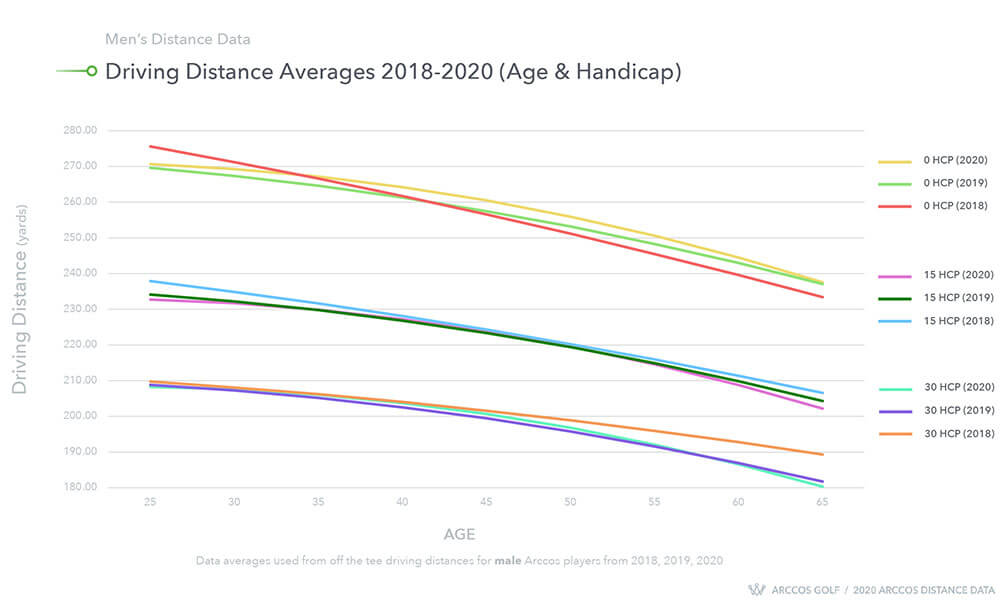
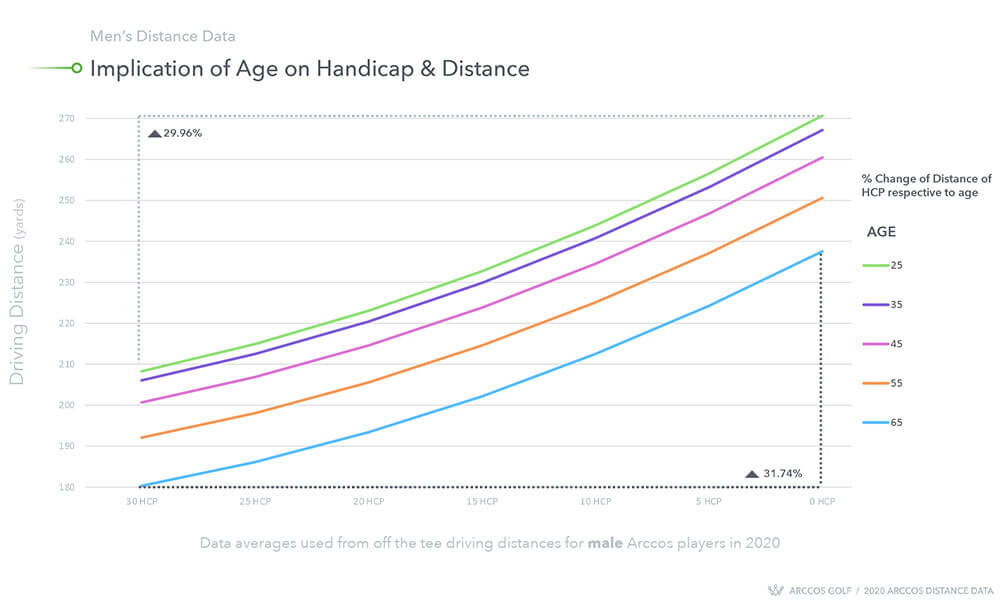
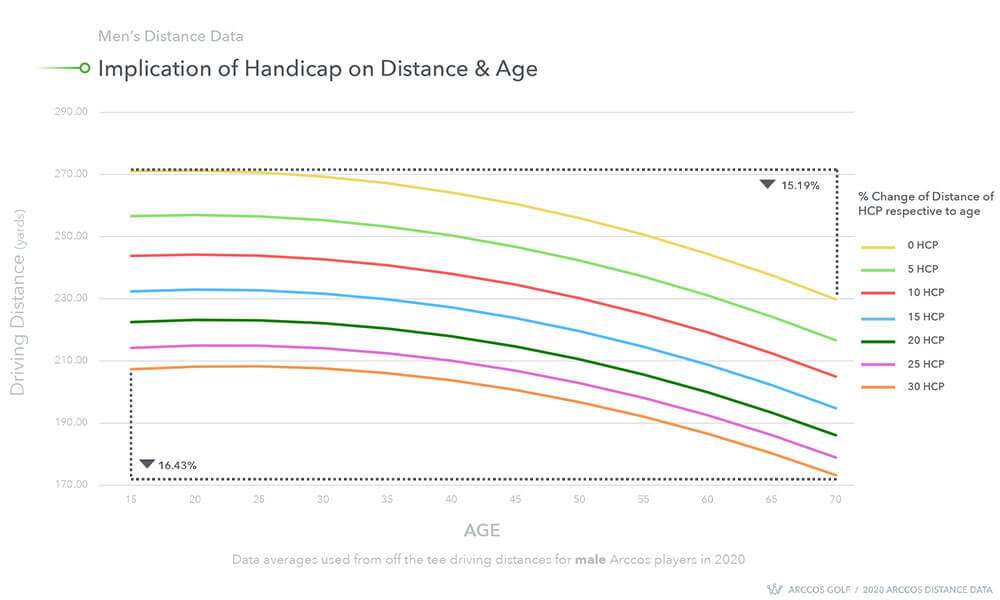




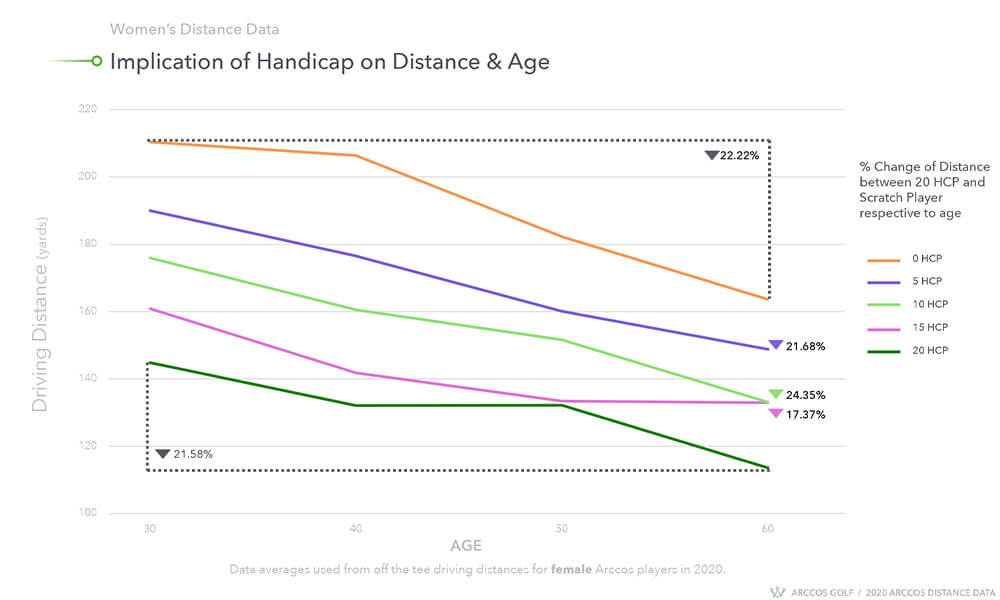




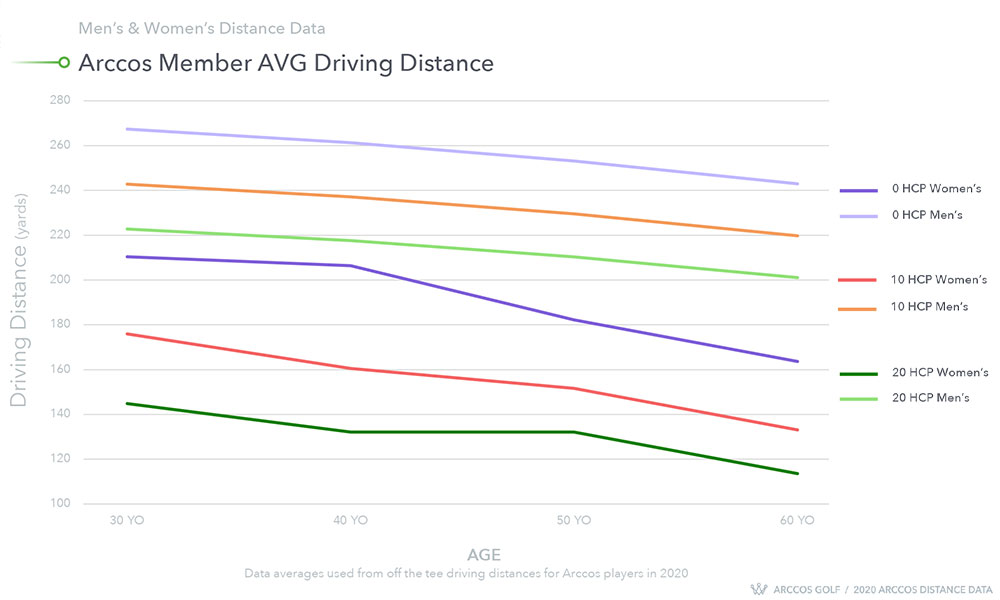
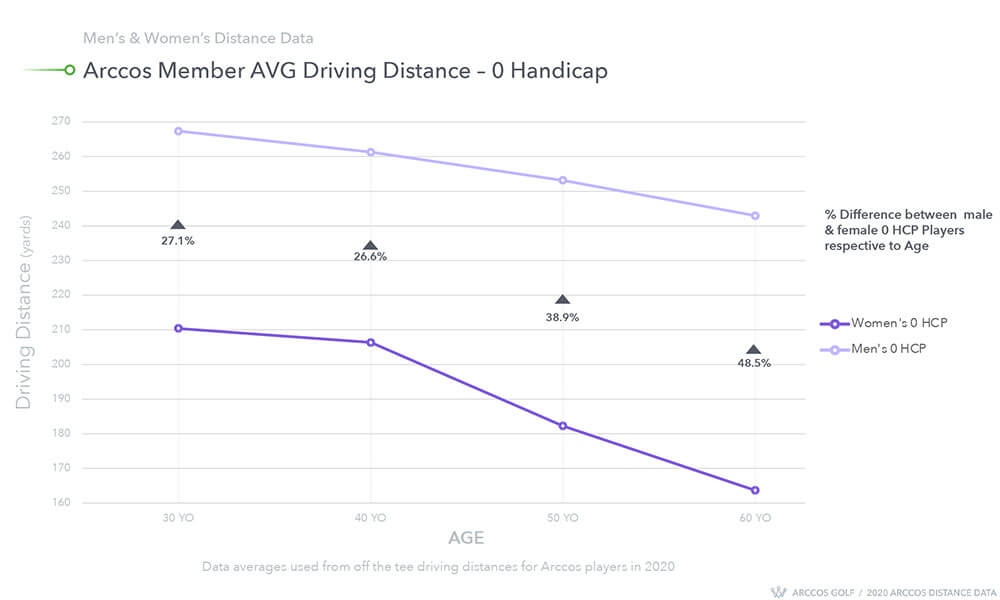

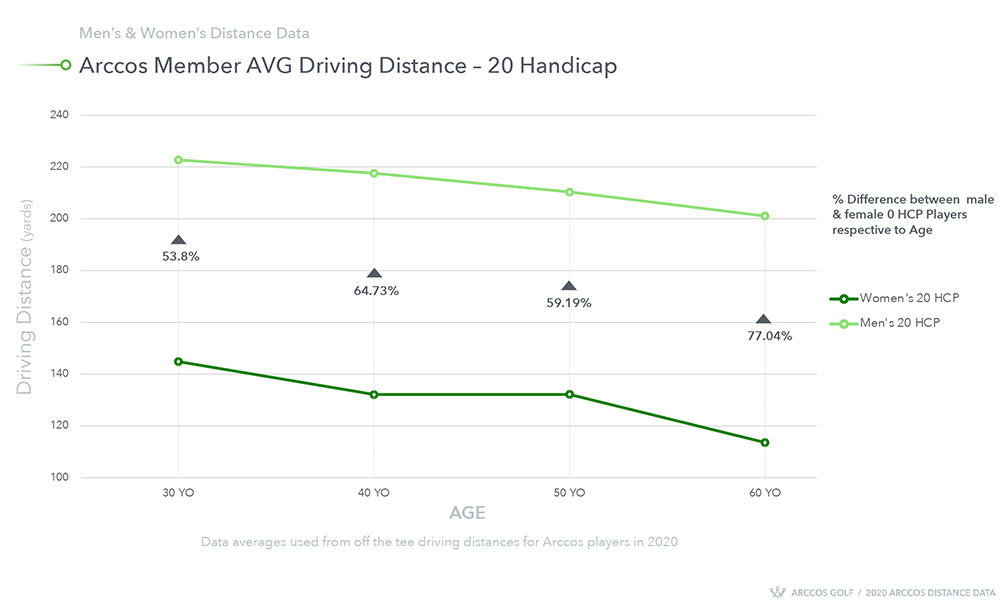










Ol'pal Gary
3 years ago
Well guys this is some pretty good work you’ve done.
As i’m 73 yrs. old it’s hard to guess where i’d fall.
Especially with the 20’s handicap i struggle with.
I don’t use Arccos for data as i don’t use those iphones.
As soon as i get new clubs with these grips i remove them, trim shaft a little , swing-weight, & then install Golf Pride MCC Plus 4 Mid-Size grips.
With all this said i still find this Very useful & Thank You for gathering & analyze the data..